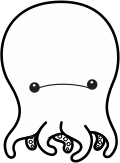◀︎ BLOG
What Org Design Actually Looks Like
When people ask me about what I do for a living, I say that I help people and teams do their best work. But that’s a little vague, so here’s the nitty gritty: As an org designer, my job is to use the tools of design to enhance organizational culture, boost collaboration and teamwork, improve structures and processes, enable learning and development, and create a sense of purpose and belonging. Then, I sleep.
If I’m going to help inspire other people, I need to start by getting inspired myself. For me, that comes from running in Prospect Park twice a week. Being near trees elevates my mood and restores me. It’s the only time during my day in urban New York City when I can actually smell plants and dirt.
8:30am: The Book-lyn Bridge
10:00am: Get the gears turning
11:00am: Disrupt your wallet
12:30pm: Lunchtime making
2:30pm: Remote synthesis
3:30pm: Meet them where they are
4:30pm: Getting physical
5:30pm: Write it out
6:30pm: Signing off
6:30am: Morning run
I take the subway from Brooklyn, where I live, to our New York City office. I don’t mind the commute because I can read two to three books a week. It’s often a chance for me to dive into new perspectives on culture, leadership, and collaboration. Reading Jake Knapp’s book Sprint sparked so many ideas, I asked him to speak with our clients—and he did!
Once I’ve settled into our studio in the West Village, I lead a quick morning standup in our project space with my teammates before our clients join us. We often work side-by-side with our org change clients, either by hosting them in our project space or by going to their offices (or both!).
In this project, we’re helping our client organization launch an internal user-centricity team. This team will help train employees to better understand the way their customers feel about and use their products. Today we are kicking off a workshop with a new group of employees. To teach them about human-centered design, we’re doing an exercise where they split up into pairs and redesign each other's wallets. If you want to improve an object that people carry with them all day every day, you’ve got to listen closely to their needs and idiosyncrasies.
Every Thursday at lunch, the entire studio comes together for a craft project to engage our senses and inspire us. We call it “Maketime.” Today, our clients are joining us to do blind contour drawings. My colleague Loren is leading the session. We sit at tables facing another person. Loren asks each of us to draw the person across from us without looking down at our paper and without lifting up our pen. Then we share our drawings, laughing at the results. This technique helps build hand/eye communication.
So much of org design is about communication. But many companies have teams that work remotely. This client's core team is based in the tri-state area, but the extended team is farther away. So, this afternoon, my teammate Nili and I are leading a session with our extended client team to synthesize the research we’ve done together. We’ve designed a series of concepts and tested them out with employees in the organization. Based on that feedback, we’re positioning the concepts on a 2x2, where one axis shows how desirable the concept was for employees, and one axis shows how feasible the concept was to implement.
We head out to the client’s office to meet with the core team. In order to make sure we’re practicing the collaboration that we preach, we make sure to spend part of the week in the client’s offices, instead of always asking them to come to us. We request a reserved workspace so we can all sit together. We’re discussing how we’ll set up this new user-centricity team: who will be on the team, what roles and responsibilities will they have, how will they work together, and whom will they need to hire.
If you haven’t noticed yet, much of my day revolves around communication and inspiration. I love that organizational design involves getting deeply curious about how a company works (informally and formally) both by listening to teams as they collaborate and by watching for the intangible behaviors that come out in meetings and hallway conversations.
One of my favorite activities to do with clients is Creative Tensions. We put a slide on the screen that prompts them to make a choice. For example:
“Purposefulness: When it comes to meaningful change that leadership and employees want to make in the world…”
There’s lack of clarity or disagreement <------------> There is alignment
We ask people to move with their bodies to one side of the room or the other to articulate their answer. All of a sudden you can physically see all the spectrum of ideas and philosophies in the room. Then, we ask a few people to share why they are standing where they are standing.
After a full day of collaborating, observing, and facilitating, I’m back at the office to write an article with my colleague Hailey. Since organizational design is a new field and can feel like a black box (even to other designers at IDEO), we are always thinking about ways to share how we work. We're working on an article about using metaphors to uncover organizational dynamics (a colleague snapped this photo for the cover of the emo rock band we’ll start one day).
One more check in with the clients over Slack, and I’m headed home. Eat, Sleep, run, org design. Repeat.

